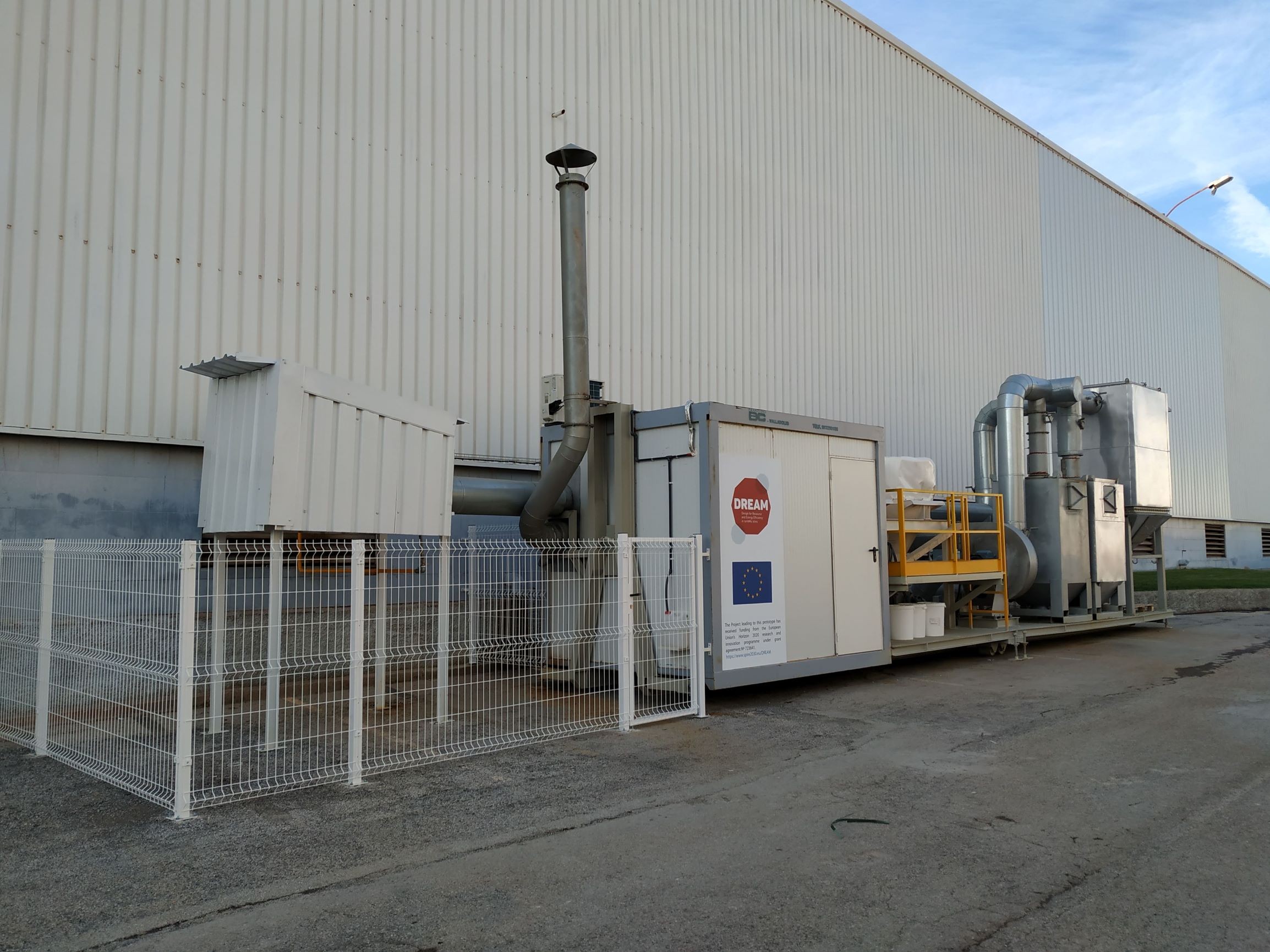Institute advances in the decrease of emissions arising from the ceramics kilns thanks to the DREAM project
In order to verify these improvements “in situ”, 3 industrial demonstrators have been developed which will act as technological showcases for the market. In this framework, and with regard to the environmental line, the Instituto de Tecnología Cerámica (ITC) has built a pilot plant composed by a bag filter with reagent injection and two packed bed reactors that focus on the study of acid pollutants, with the aim of reducing both these and other type of elements that are emitted into the atmosphere and could be harmful. This pilot plant, designed by ITC technicians, has been installed since last July at the KERABEN group facilities in Nules (Castellón) and in a short time it will be started up for the realization of different measurement campaigns that will last until the summer of 2019. This experimental study makes it possible to obtain abatement efficiencies for the different configurations of the plant. Thus, the pilot plant includes latest-generation monitoring systems that will make it possible to obtain information on the pollutant emissions in real time in an industrial setting. More about the DREAM project DREAM, acronym of “Design for Resource and Energy efficiency in ceramic kilns”, unites some of the main European players in the field of technologies for the ceramic industry, and aims to develop some milestone innovations to be applied to kilns for ceramic production. The basic idea behind the project is to reduce kilns’ energy consumption, pollutant emissions and cost of production, while increasing the quality of the final product. Five are the strategic innovations that will be developed within the project to be applied to the new kiln: a biofuel-fed CHP unit; the study of a tool for modelling, simulation and control of the cooking parameters; implementing the use of a heat exchanger to control and reuse heat; the set-up of new refractory materials and coatings to improve kiln isolation. And lastly, monitorisation and reduction of the emissions from kilns. Eleven partners are involved in the project under the lead of Sacmi, world leader in ceramic kiln production, supported by the counseling of CRIT, Italian company devoted to Technology Innovation. Some global leaders in their field complete the DREAM team: Keraben Grupo (Spain) and Mirage (Italy), both major producers of ceramics; Rath (Germany) world leader in the refractory sector, supported by the co-national research institute Forschungsgemeinschaft Feuerfest. Then the Instituto de Tecnología Cerámica (ITC-AICE), center for the university-business cooperation in the Spanish ceramic cluster network and Econotherm (UK), specialised in the production of heat exchangers, supported by the research of Brunel University London. Also very useful will be the contribution of the Italian University of Modena and Reggio and Synesis, a company specialised in the manufacturing process innovation.



